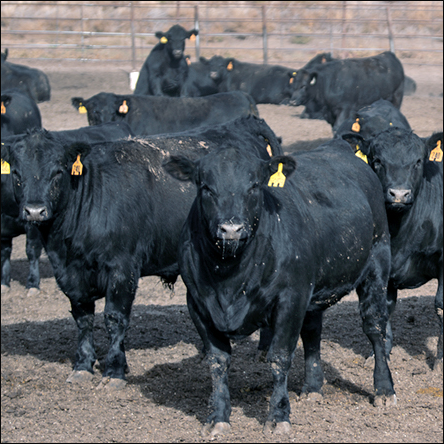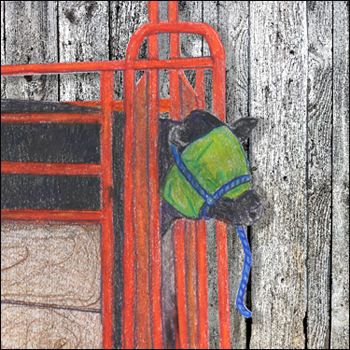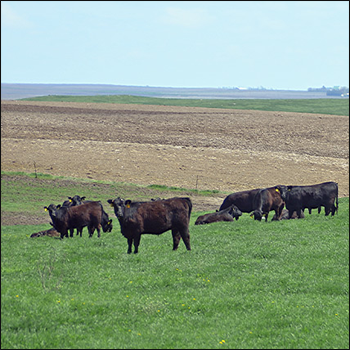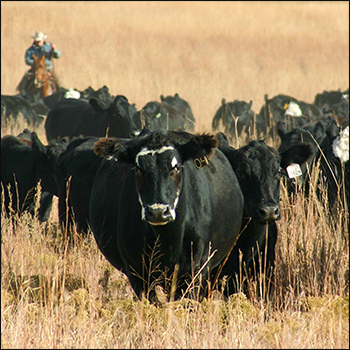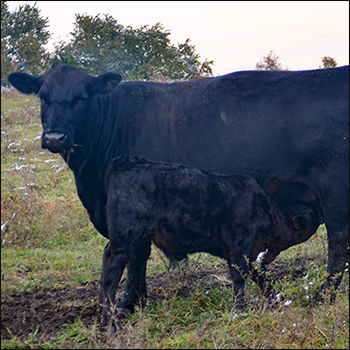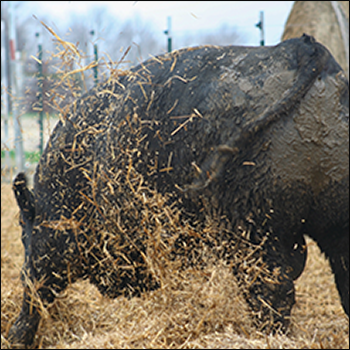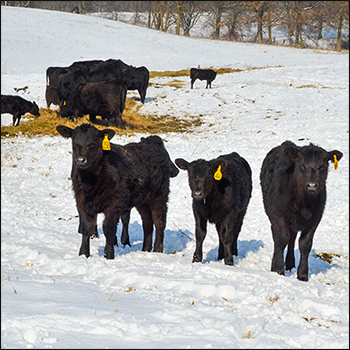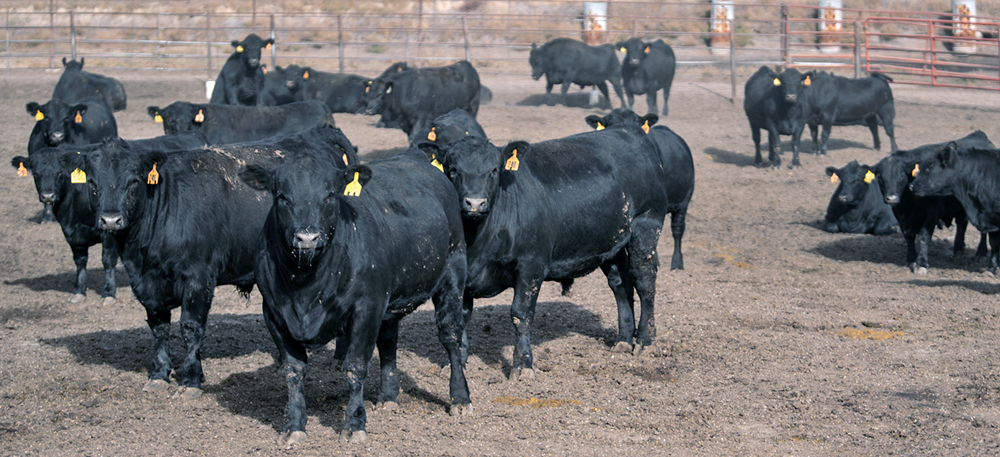
Pandemic Perspective
2020 data show increased carcass weight potential, with or without feeding beta-agonists.
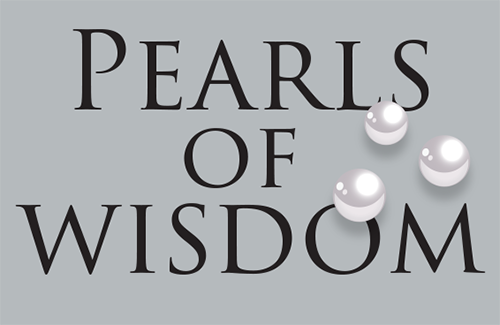
Nobody wants to repeat a year like 2020, but an upside of the market extremes is that it allowed some unique retrospective observations.
Certified Angus Beef has collected its “consist data” six times since 2008, accumulating individual data on 8 million carcasses from about two-thirds of the U.S. packing base. Analysis of the data helps the team categorize supply for the Certified Angus Beef® (CAB®) brand and understand what factors prevent cattle from getting the stamp. Comparing 2019 to 2020 gave them a rare data set.
“It’s not looking through a microscope, but looking through a telescope,” says Daniel Clark, CAB meat scientist.
The upshot of increased carcass weights
When labor shortages caused by the COVID-19 pandemic limited harvest capacity, cattle feeders had to hold cattle for dramatically extended periods of time.
“We’ve all lived through it. We understand the disruptions that took place there,” says Clint Walenciak, CAB director of product solutions. “What can we learn from what happened in that time frame?”
Carcass weights went up at the same time quality grade soared. Some weeks the CAB brand saw record-high acceptance rates, with 41% of the predominately black-hided (A-stamped) carcasses meeting the 10 brand specifications.
The more carcass weight, the better — to a point, he says.
Typically, there are 40- to 50-pound (lb.) swings in average hot carcass weights (HCW) during the year. In 2020 the seasonal highs and lows spanned 70 lb., Walenciak says.
“As carcass weights hit their peak, CAB acceptance rates were at their lowest points,” he says.
While HCW spikes boost marbling, they also correlate with jumps in other traits where there is an upper limit for brand certification.
“When we increase our carcass weight, that’s a good thing for marbling; but it does the exact opposite for hot carcass weight, ribeye area (REA) and backfat. It works against us,” Clark says.
In 2008, 94% of cattle were kicked out of CAB acceptance for lack of marbling. By 2021, that number had declined to 80%. Cattle can miss the mark on more than one measure, such as being both too heavy and having a ribeye above 16 square inches (sq. in.), for example.
Fewer cattle failed the marbling threshold; but also, heavier cattle meant more failed for other reasons, Walenciak says.
Around 900 lb. seems to be the magic number where the increase in marbling wasn’t enough to overcome the increasing discounts for outliers.
“That 900-pound [threshold] is ultimately when we changed from having a net-positive effect to a negative effect,” Clark says. “We start to reach that point where we are now kicking out more animals because of hot carcass weight, ribeye area and fat than we are gaining from getting more marbling.”
They are likely beginning to see their most potential at around 850 lb., he notes, though it’s based on an average population.
“There’s a significant number of cattle that are in the market that ultimately are not meeting their optimum genetic potential,” Clark says.
A new look at feeding technology
At the height of the pandemic-induced disruptions, many cattlemen didn’t have a choice. They had to feed cattle longer.
Brad Johnson, the Gordon W. Davis Regent’s chair in Meat Science and Muscle Biology at Texas Tech University, was fielding several calls when feeders wondered how to manage growth-enhancing technologies considering unknown harvest dates.
Beta-agonists are typically fed just 20 to 30 days at the end of a feeding period.
“We feed a short time because the receptors, if we feed longer, become desensitized, and they don’t respond to [the additive] anymore,” he says. “From an economic standpoint, after about 38 to 40 days, you’re losing money every day.”
Without the carcass gain to pay for the compound, it’s a futile investment, he says.
In June 2020, Johnson estimates, only 30%-35% of all fed cattle were finished with beta-agonists, and those able to maintain their program had arrangements with a packer.
“They knew within maybe a 10-day window when they could ship these cattle,” he says.
Johnson suggests beta-agonist levels may never return to pre-pandemic levels of 70%-75% industry wide.
“If I just simply feed these cattle three weeks longer, I’m going to get a beta-agonist response without the risk and management issues of feeding that compound,” he says, noting export markets with a zero-tolerance beta-agonist policy.
Johnson says 2020 provided a case study unlike any he’d design, but a look back might help inform future decisions.
To read the full article as it appeared in the February 2020 Angus Journal, or to view the video interview with Johnson, visit https://bit.ly/AJPandemicLessons.
Editor’s note: Photos courtesy CAB.


Angus Proud
In this Angus Proud series, Editorial Intern Jessica Wesson provides insights into how producers across the country use Angus genetics in their respective environments.
 Angus Proud: Scott Sproul
Angus Proud: Scott Sproul
Oklahoma operation learned wisdom of moving calving season to better suit their marketing needs.
 Angus Proud: Bubba Crosby
Angus Proud: Bubba Crosby
Fall-calving Georgia herd uses quality and co-ops to market calves.
 Angus Proud: Jim Moore
Angus Proud: Jim Moore
Arkansas operation retains ownership through feeding and values carcass data.
 Angus Proud: Les Shaw
Angus Proud: Les Shaw
South Dakota operation manages winter with preparation and bull selection.
 Angus Proud: Jeremy Stevens
Angus Proud: Jeremy Stevens
Nebraska operation is self-sufficient for feedstuffs despite sandy soil.
